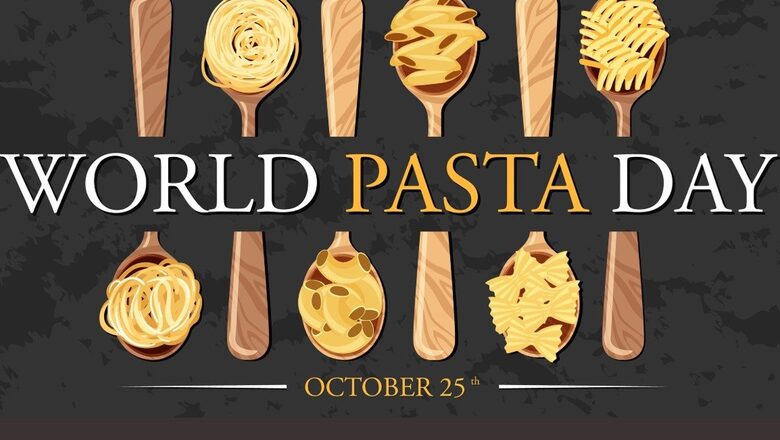
views
World Pasta Day is an annual observance celebrated on October 25. It is a day dedicated to the recognition and enjoyment of one of the world’s most beloved and versatile foods—pasta. The day serves as a platform to celebrate pasta’s cultural significance, its impact on global cuisine, and its many delicious variations.
HISTORY OF PASTA
Pasta’s history is rich and dates back thousands of years. It is believed that pasta was first developed in China around 1700 BC. Marco Polo is often credited with bringing pasta to Italy, but pasta-like dishes existed in Italy well before his time.
The word “pasta” is derived from the Italian word “paste,” which means “dough.” In Italy, pasta became a staple food due to its long shelf life, making it ideal for long sea voyages.
Pasta production was industrialized in the 19th century, allowing it to be mass-produced and distributed globally.
In the 20th century, pasta’s popularity soared worldwide. Varieties and cooking techniques expanded, and pasta became a staple in many countries, from Italian classics like spaghetti and lasagna to Asian noodle dishes.
EVOLUTION OF PASTA
Pasta has evolved over time in various ways, with each culture adapting it to their tastes and ingredients. Some notable examples include:
- Italian PastaItaly boasts a diverse range of pasta shapes and types. Over centuries, regional variations emerged, giving us classics like spaghetti, fettuccine, ravioli, and more.
- Asian NoodlesAsian countries have their own traditions of noodle-making, from Chinese egg noodles to Japanese udon and soba.
- Middle Eastern PastaDishes like couscous, falafel, and kibbeh use ground wheat or semolina as the main ingredient.
- South American PastaIn countries like Argentina, pasta is popular, with unique dishes like “Ñoquis del 29” (gnocchi on the 29th) being a tradition.
- Gluten-Free PastaWith increasing dietary preferences and allergies, there’s been a surge in gluten-free pasta made from alternative flours like rice, quinoa, and chickpea.
5 PASTA RECIPES
- Spaghetti CarbonaraA classic Roman dish made with eggs, Pecorino Romano cheese, guanciale (cured pork cheek), and black pepper. It’s rich and creamy without using any cream.
- LasagnaLayers of pasta, ricotta cheese, mozzarella, and a hearty meat or vegetable sauce, baked until bubbly and golden.
- Pesto LinguineFresh basil, garlic, pine nuts, Parmesan cheese, and olive oil blended into a vibrant sauce, tossed with linguine.
- Pad ThaiA popular Thai stir-fried noodle dish made with rice noodles, shrimp or tofu, eggs, and a tangy sauce made from tamarind, fish sauce, and lime.
- Ravioli with Brown Butter and SageHomemade or store-bought ravioli cooked until tender and served with a brown butter and sage sauce, topped with Parmesan cheese.
These recipes represent just a fraction of the world of pasta dishes. Pasta is versatile, and you can create countless variations to suit your preferences and dietary requirements.



















Comments
0 comment